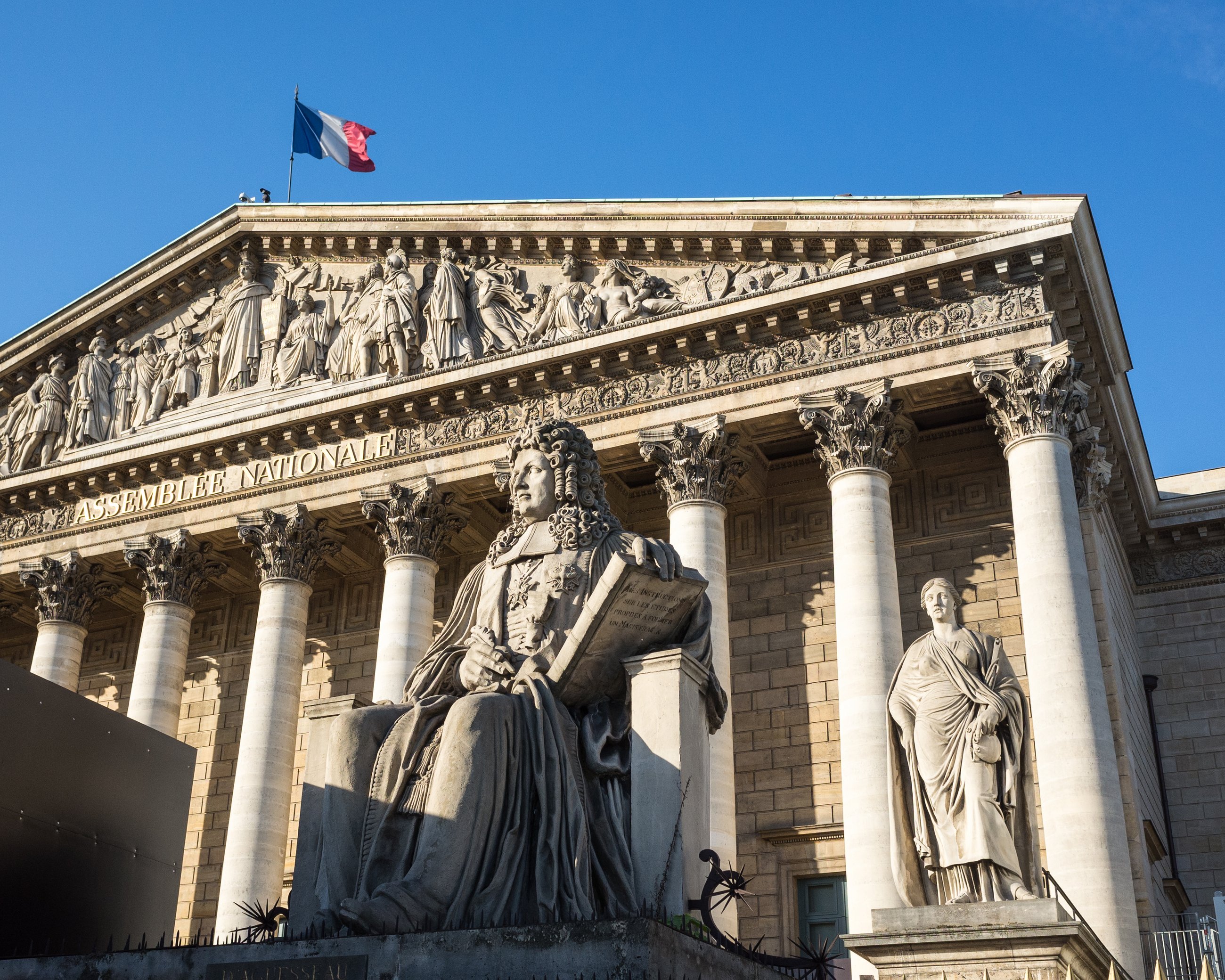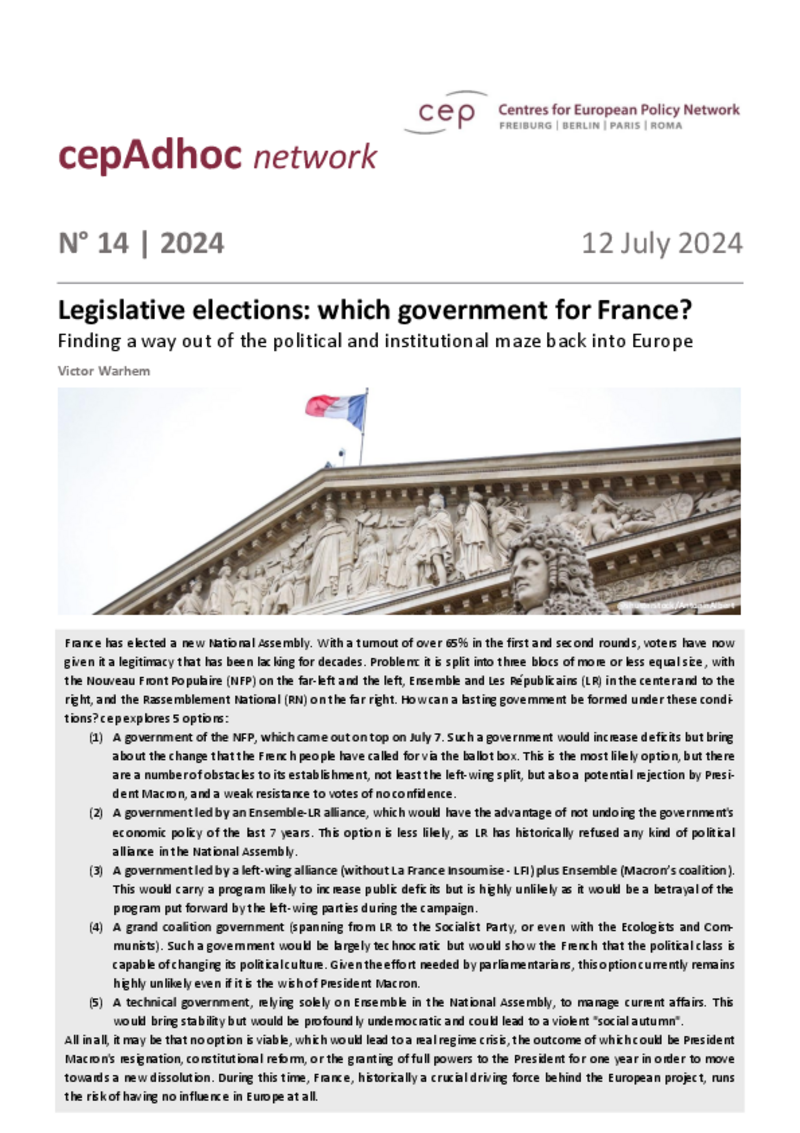
Economic & Fiscal Policy
Legislative Elections: Which Government for France?
cepAdhoc
Despite the pleasant surprise, France is still more divided than ever, and this brings with it a host of uncertainties. "At a time when Europe needs leadership in the European Council for the forthcoming term of office of the Commission and Parliament, France, one of the historic driving forces of European integration, is entering a period of political turbulence and will certainly not be able to assume this role," points out Victor Warhem, cep representative in France.
In the absence of a clear balance of power between the main political forces in the new National Assembly, several scenarios are likely for the evolution of the government. This cep Adhoc explores five possible scenarios based on different forms of coalition:
- a government dominated by the NFP
- a centre-left coalition uniting the presidential camp and several NFP parties
- the government's retreat to the parties of the presidential majority
- an alliance between the presidential camp and the remnants of the former LR right wing
- a government of national unity that would unite all parties except the extremes in a grand coalition that would form a technocratic government.
However, all these scenarios have their weaknesses and vulnerabilities. France is likely to experience difficulties in governance because of the head-on confrontation between the main parties in power, which seem reluctant to agree on a coalition. "Despite all the options outlined above, France could still face a regime crisis. The National Assembly could quickly become ungovernable, especially if the parties do not move away from their old political culture based on contention - a luxury allowed by the Fifth Republic and its first-past-the-post system, which has long favoured a few large parties," Warhem warns.
Download PDF
| Legislative Elections: Which Government for France? (publ. 07.08.2024) | 555 KB | Download | |
 | |||


